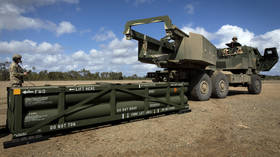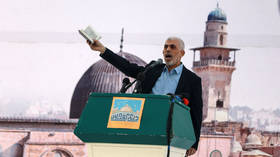World’s most powerful rocket booster headed to Mars completes final test (VIDEO)
NASA have successfully tested the booster for the world’s most powerful rocket. The two minute burn was the final ground test for the booster they hope will one day blast humanity off to Mars.
The final experiment took place in the Utah desert on Tuesday morning - with NASA allowing the public to watch the proceedings live via the space agency’s webstream.
Some 55 tons of propellant per second were burned by the booster with the goal of producing 3.6 million lb of maximum thrust, equivalent to the power of 14 Boeing 747s at takeoff, according to its manufacturer. In other words, it was one hell of a fire.
Fired up! Miss today's booster test for @NASA_SLS, the world’s most powerful rocket? Watch it now:#JourneyToMars
— NASA (@NASA) June 28, 2016
https://t.co/wRVh32cTVc
A successful test in March heated conditions to +32 degrees Celsius (+90 Fahrenheit), but Tuesday’s two-minute trial used cooler temperatures of +4 degrees Celsius (+40 Fahrenheit) it may encounter on future voyages in the cold reaches of the universe.
Get ready! @NASA_SLS rocket booster, most powerful ever, will fire up for a test tomorrow at @OrbitalATK in Utah.https://t.co/VHhwuuZuHf
— NASA (@NASA) June 27, 2016
The five-segment booster, which is 54 meters (177ft) tall, is designed to give an extra kick to NASA’s Space Launch System (SLS), the most powerful rocket in history.
It will next be part of SLS’s first test flight into space in 2018, when it takes NASA’s unmanned Orion spacecraft into orbit with 13 research satellites.
Get fired up for tomorrow's @NASA_SLS booster test! Watch on NASA TV at 10am EDT #SLSFiredUphttps://t.co/Uh2nro5wS3pic.twitter.com/UUKuE8Dx0G
— NASA Education (@NASAedu) June 27, 2016
NASA aims to launch the second SLS flight with people in five years, saying in a statement that the technology will “achieve human exploration to deep-space destinations, including our journey to Mars.”
"What we're doing now is making the dream of Mars a reality." -Astronaut Stan Love #SLSFiredUp#QM2#NASASocial
— Orbital ATK (@OrbitalATK) June 27, 2016
the exhaust exiting the booster will be at about 3000º F. It turns the sand into glass. #SLSFiredUp@NASA_SLS
— John Tulloch (@jotulloch) June 27, 2016
Meanwhile, the boys and girls from Space X released an extended video of their attempts to land a rocket-shaped drone on a target in the middle of a swimming pool.











